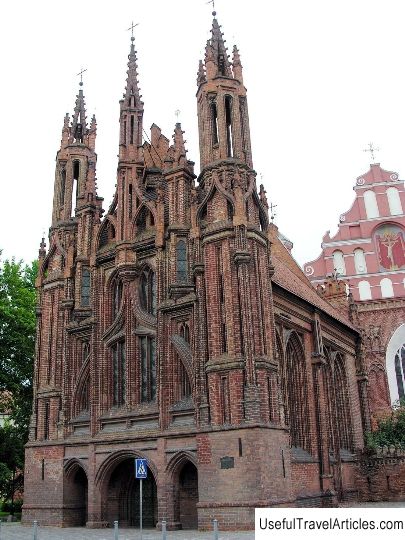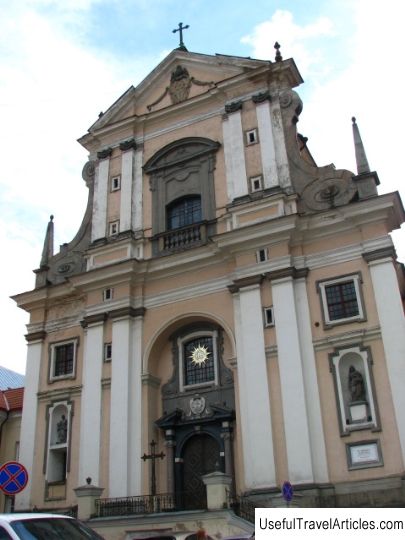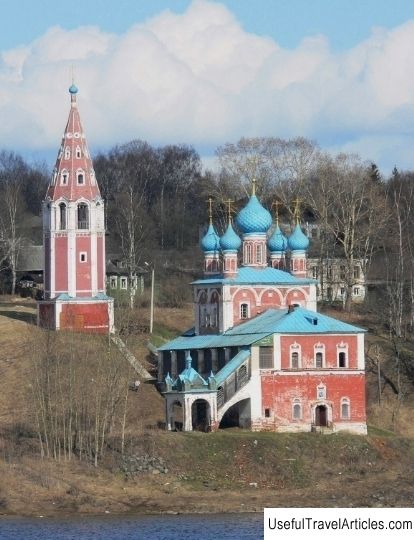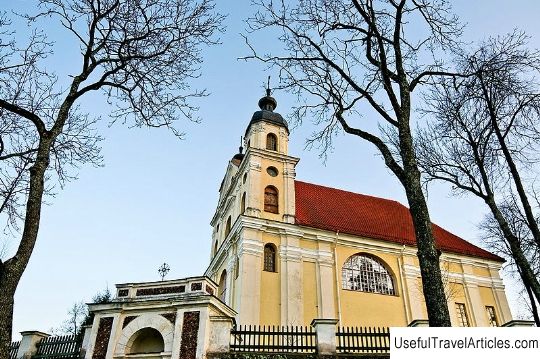Church of St. Catherine (Sventos Kotrynos baznycia) description and photos - Lithuania: Vilnius
Rating: 9,4/10 (5893 votes) 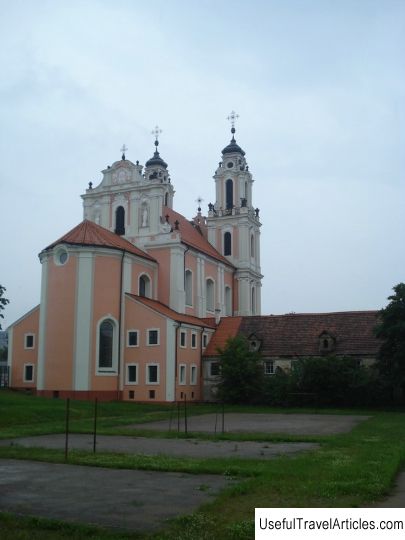
Church of St. Catherine (Sventos Kotrynos baznycia) description and photos - Lithuania: Vilnius. Detailed information about the attraction. Description, photographs and a map showing the nearest significant objects. The name in English is Sventos Kotrynos baznycia. Photo and descriptionThe Vilnius Church of St. Catherine, or Kotrina, as they said in the old days, in its first architectural version was wooden. Belonged to the late Baroque style. It was one of the most beautiful churches in Lithuania. It belonged to the Benedictine convent. The church of St. Catherine received its present appearance during the reconstruction of 1743. The devastating fires that raged in the city several years earlier had also affected this temple. That's why it had to be remodeled. The work was carried out under the direct supervision of the designer - architect Glaubitsas. Intricate patterned front gables and surprisingly graceful towers are the product of the imagination and creative thinking of this particular architect. The church is a late baroque building, decorated in the rococo style. During the reconstruction, two remarkable four-storey Rococo towers were added over the main facade from different sides. In the central part of the facade, Glaubitz built a new pediment, which rises between the towers at the level of their third tier. The lower tier is modestly decorated, but the rich portal, decorated in the Baroque style, emphasizes with its severity. It is framed by relief columns, pilasters and an ornamental cartouche with coats of arms. Windows and niches of the second tier are richly ornamented. The third tier is similar to the second, but looks even richer due to the high, graceful pediment. It harmoniously completes the overall architectural line. Under the pediment, on the second tier of the main facade, there are two niches with statues of St. Benedict and St. Catherine. At the level of the fourth tier, the towers narrow. Openwork lattices and decorative vases are built into the freed space. The number 1743 is read in the air weaving of the lattice. Above the fourth tier there is also a fifth, small tier, above which bulbous helmets are installed. The interior is harmoniously complemented by nine baroque altars. The interior walls of the church are decorated with paintings by the outstanding painter of the 18th century, Shimon Chekhovich. The monastery flourished in the late 17th and early 18th centuries, when Sibylla Magdalena and Anna, the daughter of the Lithuanian magnate Jan Pats, entered the monastery. In 1700 he bequeathed a large property to the monastery. During this period, the nuns of the monastery strongly supported book publishing. A library was established at the monastery, which was one of the largest libraries in the congregation. Currently, this priceless collection of books is kept in the depositories of the M. Mazvydas National Library of Lithuania. During the invasion of the French in 1812, the temple was ravaged by French soldiers and plundered. A pharmacy warehouse was located in its premises. Before the war, a boarding house for girls operated in the building of the monastery, but then it was abolished. The temple was also damaged during the Second World War. Under Soviet rule, established in 1946, the church was closed. Apartments and various secular institutions were arranged in the premises of the monastery. The church became a warehouse for the Art Museum, which was transferred to the jurisdiction of the church in the process of nationalization. The nuns had to disperse in search of a new monastery. Many of them were forced to leave the country and go to Poland. In 1990, the temple was returned to the Vilnius Archbishopric. For a long time, the church remained inactive. In 2003, the city's self-government bodies signed an agreement with the archbishopric, according to which the former were obliged to carry out restoration work in the inactive churches, in exchange for their subsequent twenty years of use for cultural activities. The state has invested six million litas in the restoration. In 2006, visitors were able to see the restored church. Now the cultural center of Vilnius is located here.        We also recommend reading Rude Fountain (Rudes fontanas) description and photos - Lithuania: Siauliai Topic: Church of St. Catherine (Sventos Kotrynos baznycia) description and photos - Lithuania: Vilnius. |

